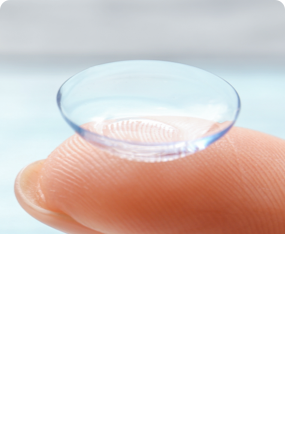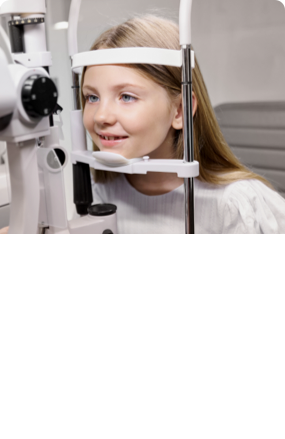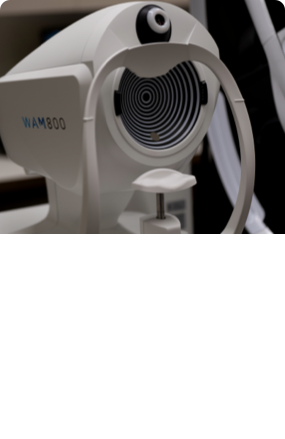Cataracts are an eye condition where there’s gradual clouding of the eye’s lens, eventually affecting your vision. Cataracts form part of the normal aging process, with age being the most common cause. Other causes can include family history, UV damage, trauma to the eye, systemic or medical conditions, medications, and congenital conditions.
Because cataracts have little effect on your vision in the early stages of development, your eye doctor can conduct an eye exam with various tests to diagnose cataracts.
What Are Cataracts?
Imagine trying to see through a foggy window. Experiencing cataracts is similar to that.
Over time, the eye’s lens, which is usually clear, becomes clouded, significantly reducing vision. Cataracts develop when the proteins on the eye’s lens clump together and prevent light from reaching the retina (the light-sensitive tissue at the back of the eye), affecting vision.
Cataracts often develop slowly and without initial pain or prominent symptoms, making early detection with regular eye exams vital for monitoring. However, cataracts can also progress over a few months. Cataracts can form in one or both eyes, at the same time, at different times, and different rates.
Cataract Symptoms
Cataracts can affect vision clarity and present with the following symptoms:
- Blurred, foggy, or dim vision that doesn’t go away with repeated blinking
- Double vision
- Seeing halos around lights
- Dull or faded colors
- Increased sensitivity to light and glare
- Trouble with night driving
- Increased difficulty with vision at night, such as trouble seeing and reading
- Frequent changes in prescription glasses
Types of cataracts
Different types of cataracts include:
- Nuclear cataracts: the most common, forming in the center of the eye’s lens and gradually worsen.
- Cortical cataracts: form on the edge of the lens and grow towards the center.
- Congenital cataracts: are present at birth and can be small or more severe.
- Trauma-induced cataracts: form anywhere on the lens and develop in a flower or rosette shape.
- Posterior subcapsular cataracts: develop faster and at the central back surface of the lens.
What Causes Cataracts
Cataracts have several underlying causes.
Aging
As we age, the body’s natural processes begin to slow down. The eye’s lens is made mostly of water and protein. With age, the protein in the eye’s lens starts to break down and clump together, clouding the lens. This age-related cataract is the most common type, affecting those usually in their 60s and beyond. But cataracts can also develop as early as 40.
Genetics
Genetic predisposition or family history of cataracts play a crucial role in the development of cataracts, with some individuals inheriting a higher likelihood of developing cataracts.
UV Damage
Environmental factors such as prolonged exposure to ultraviolet light without protective eyewear can cause a cataract to form.
Trauma to the Eye
Injuries to the eye, eye surgery, and radiation treatments that damage the eye’s lens can cause a cataract. Eye injuries can include blunt force from a finger, ball, or fist. A penetrative injury to the eye can be a sharp object such as a splinter, pencil, or knife.
Medical Conditions
Diabetes and other medical conditions, such as high blood pressure, obesity, chronic kidney disease, and autoimmune disease, can cause cataracts.
Medications
Certain medications can elevate the risk of cataract formation. Long-term use of oral steroids can lead to early development of cataracts.
Congenital Conditions
Congenital cataracts are when babies are born with cataracts. They are either inherited or result from an underlying health condition. Because a congenital cataract can affect vision learning, surgery is required to allow for normal vision development.
Preventing Cataracts
Is it possible to prevent cataracts? While there’s no foolproof method, certain lifestyle adjustments can reduce your risk of developing cataracts or slow down the development of cataracts:
- Wear appropriate eyewear: Eyewear that blocks UV rays when outdoors helps reduce the amount of exposure to the eyes.
- Quit smoking: Smoking increases your risk of cataract formation.
- Manage diabetes: People with diabetes should maintain normal blood sugar levels to reduce the risk of cataracts.
- Eat a balanced diet: A diet rich in antioxidants may delay cataract progression.
- Wear eye protection: Wear appropriate safety eyewear to guard against physical trauma and eye injuries.
Treatment for Cataracts
When you notice changes to your vision, visit your eye doctor for an eye exam to determine the underlying cause. Treatment in the early stages of cataracts may include non-surgical approaches such as updated eyeglasses or contact lens prescription to enhance vision and using magnifying lenses or brighter lighting to see better.
However, once cataracts progress and affect your daily life and driving ability, your eye doctor may recommend cataract surgery. Cataract surgery removes the clouded lens and replaces it with a clear artificial lens.
Prevention & Early Detection of Cataracts
Understanding cataracts can empower you to take proactive steps toward maintaining your sight. These can include educating yourself about the underlying causes and risks, recognizing early vision changes, adopting protective habits, or having regular eye exams to reduce your risk of developing cataracts.
If you suspect cataracts, book an appointment with Orchard Park Optometry for early detection and intervention to help preserve your world in vivid detail.


















